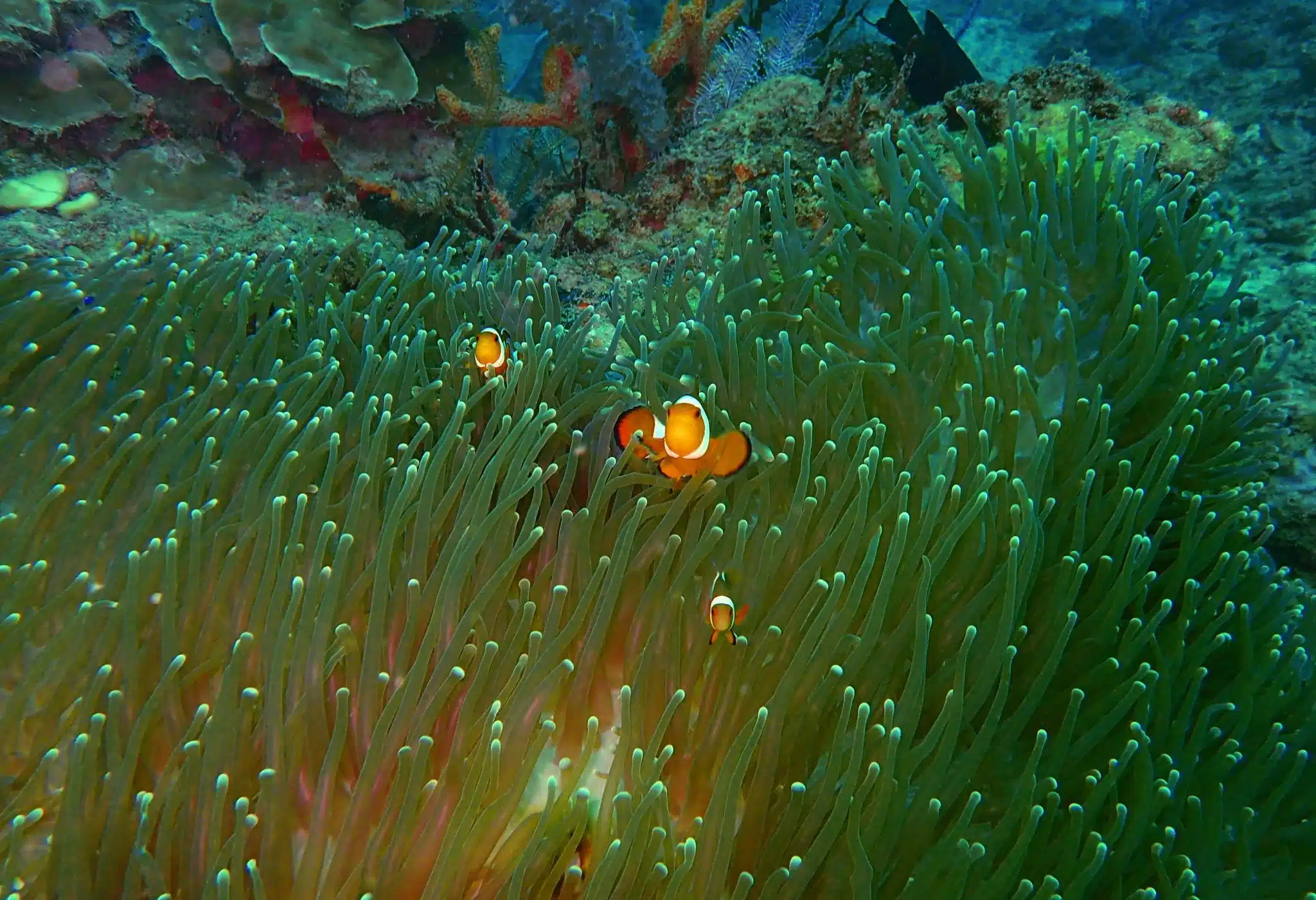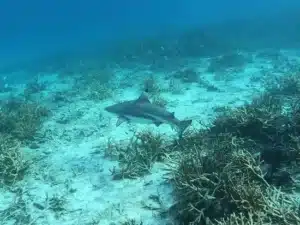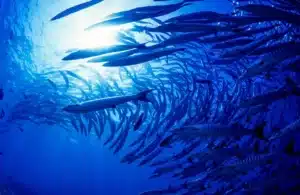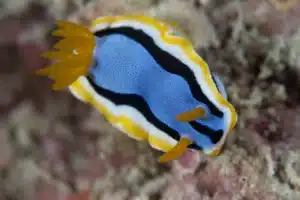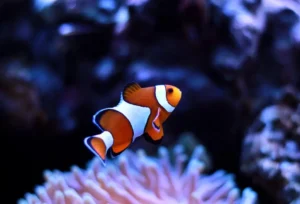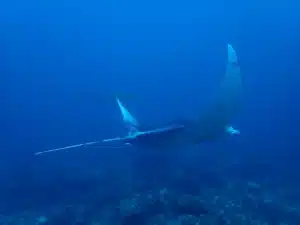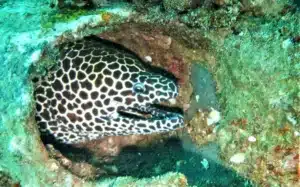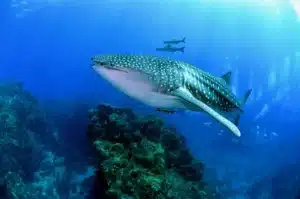When people imagine scuba diving in Malaysia, their minds often wander to warm turquoise seas, colourful coral gardens, and the rush of descending into an underwater world. But what truly makes this country a diver’s dream is the incredible diversity of marine life in Malaysian waters. From tiny, brilliantly coloured nudibranchs to the majestic whale shark, each dive is like stepping into a vivid, living documentary.
Whether you’re preparing for your very first dive or you’ve logged hundreds of hours underwater, here’s a closer look at some of the most captivating species you may encounter beneath Malaysia’s waves.
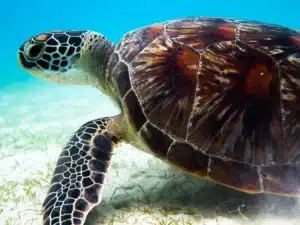
1. Sea Turtles – The Gentle Gliders
Malaysia is home to two well-known turtle species: the green turtle and the hawksbill turtle. You can often spot them at popular dive destinations such as Redang Island and Perhentian Islands.
Green turtles prefer seagrass meadows, grazing peacefully, while hawksbills feed mainly on sponges and are recognised by their striking patterned shells. Observing them up close is magical, but remember the golden rule — admire from a distance and never touch.
Fun fact: Green turtles can live beyond 80 years and travel thousands of kilometres between feeding and nesting sites.
2. Reef Sharks – The Misunderstood Guardians
Blacktip and whitetip reef sharks in Tioman or Sipadan are a common sight. Far from the fearsome image painted by movies, these sharks are shy, graceful, and rarely pose a threat to divers.
They help maintain healthy fish populations, playing a vital role in the ecosystem. Spotting them glide over the reef or rest on sandy patches is a reminder of how balanced and interconnected the underwater world is.
Tip: Keep calm, respect their space, and you’ll be rewarded with an unforgettable encounter.
3. Barracudas – The Silver Tornado
Few underwater experiences compare to swimming alongside a massive school of barracudas in Sipadan, swirling together like a silver cyclone. Sipadan is famous for these breathtaking formations, sometimes numbering in the thousands.
Though their sharp teeth give them a fierce appearance, barracudas generally keep their distance unless provoked. Watching them move in perfect harmony is a true highlight for many divers.
4. Nudibranchs – The Tiny Jewels
If you love macro photography, you’ll adore nudibranchs in Mabul, Kapalai or even Tenggol. These small, shell-less molluscs come in a dazzling array of colours and patterns, crawling across coral, rocks, and sandy seabeds.
Their vivid colours often warn predators of their toxicity or unpleasant taste. Some even borrow stinging cells from their prey for defence. Each one is like a miniature masterpiece waiting to be discovered.
5. Clownfish – The Ocean’s Celebrities
Made famous by “Finding Nemo,” clownfish are instantly recognisable with their bright orange and white stripes. You can find them at many Malaysian dive sites, including Tioman Island, living in partnership with sea anemones.
The anemone’s stinging tentacles protect the fish, while the clownfish keeps its host clean and attracts food. Watching these photogenic little fish dart in and out of their homes is pure joy.
Picture credit : B&J Diving Centre
6. Manta Rays – The Graceful Giants
If luck is on your side, you might encounter manta rays in Layang-Layang or at deep-water sites in Sipadan. With wingspans of up to seven metres, they glide through the water like underwater birds, feeding on plankton and tiny fish.
A manta ray’s calm, majestic movement is awe-inspiring, making every sighting a treasured memory for divers.
7. Moray Eels – The Shy Watchers
Moray eels often peek out from rocky crevices or coral formations in Tioman, their mouths open not in aggression but simply to breathe.
While fascinating to watch, it’s best to keep your hands away from holes and crevices — for your safety and the well-being of hidden marine life.
8. Whale Sharks – The Gentle Giants of the Sea
Occasionally spotted in Tenggol Island and during migration seasons in Perhentian Islands, whale sharks are the largest fish in the world, growing up to 12 metres long.
Despite their size, they feed mainly on plankton. Swimming alongside a whale shark is a once-in-a-lifetime experience that leaves most divers humbled and in awe.
Why Malaysian Waters Are a Diver’s Paradise
Malaysia’s location within the Coral Triangle means it boasts one of the highest levels of marine biodiversity in the world. From beginner-friendly reefs to advanced drift dives, there’s something for everyone.
Accessible dive sites: Tioman and Perhentian are ideal for new divers, while Sipadan offers thrilling experiences for the advanced.
Year-round diving: Regional variations in monsoon seasons mean there’s always somewhere to dive.
Unmatched biodiversity: Thousands of species of fish, coral, and invertebrates call these waters home.
Tips for Responsible Encounters
Look, don’t touch: Even gentle contact can harm marine life.
Perfect your buoyancy: Avoid damaging coral or stirring sediment.
Use reef-safe sunscreen: Protect yourself without harming the reef and also marine life.
Choose eco-friendly operators: Support dive centres with sustainable practices.
Final Thoughts
Diving in Malaysia isn’t just about ticking off species from a list – it’s about forming a connection with the underwater world. Every turtle, shark, or clownfish encounter tells a story about the beauty and fragility of our oceans.
Whether you’re planning a weekend in Tioman or a bucket-list trip to Sipadan, take the time to truly observe, respect, and appreciate the wonders of marine life in Malaysian waters.
Related Posts You Might Enjoy
7 reasons why you should seriously consider scuba diving in Malaysia
Discover Malaysia’s best scuba diving spots, from Tioman to Sipadan.

